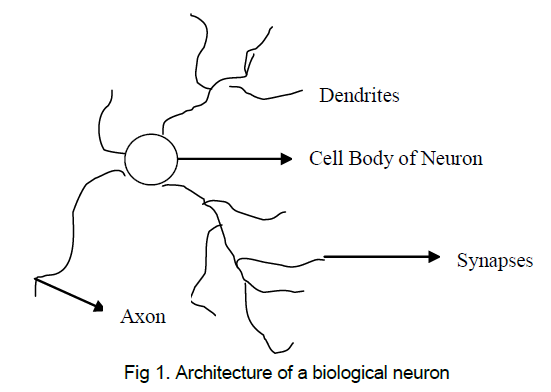
"AN INVESTMENT IN KNOWLEDGE ALWAYS PAYS THE BEST INTEREST" BENJAMIN FRANKLIN

"AN INVESTMENT IN KNOWLEDGE ALWAYS PAYS THE BEST INTEREST" BENJAMIN FRANKLIN

Short Communication - (2021) Volume 58, Issue 1
Published: Jun 28, 2021
The concept of ANN was first projected by Alan Turing in his intelligent machinery paper in 1948 (Turing,1969). Before that in 1943, an experimental framework was developed by McCulloch and Walter Pitts to address the working of neuron based on mathematical modeling and algorithms which is counted as one of the base work for developing the neural network model (Hayman, 1999). Neural network is an efficient concept that is broadly used in the biomedical and healthcare domains such as breast cancer diagnosis (Sandhu, 2015), diabetes diagnosis (Kavakiotis, 2017) etc and it has been applied to these specific domains due to its capability to simplify and to act in response to unpredicted inputs.
It is a scheme of both the software and hardware pattern as like the process of neurons in the human brain. Neural network’s capability to perform computation is based on the replications of powers and flexibilities of human brain by artificial means. A human brain can visualize and has an ability to learn. Accordingly, neural networks also can learn.
Furthermore, the main motto of this article is to: (i) make understand the basics and the importance of NNs (ii) inspire researchers as well as practitioners of all domains to innovate novel solutions to unresolved problems real world using ANN.
The term ‘Neural’ is derived from basic functional unit of neuron or nerve cells from the human nervous systems. Neurons are performed as computation of non linear mapping junctions. The nervous system of a human is having some billions of neurons of various categories along with the distance end-to-end appropriate to their position in the body. Each neuron splits several features with remaining cells other than it contains appropriate and specific properties to take process.
It sends an electrical indication during overall interdependence or relation of communiqué structure of the brain. Receivers are associated by the several neurons and rests of the neurons are associated to process as well as to communicate the related messages. The associated area is known as synapse that attaches the axon of one neuron with adjacent nodes. The sketch of human neural cell is depicted in Figure 1.

Figure 1: Architecture of a biological neuron
The information is transported from one to other neurons and broadcasted in the appearance of incentives by dendrite, impersonation are to make active the cell. Through axon, neurons send signals to other neurons and decision triggered that exceeds the utmost level of accretion value. The mainstreams of ANN models display the primary function of neuron.
Exceedingly complicated pattern recognition can be accomplished with the help of the wide network of neurons and therefore named as neural networks, and these are often referred to as ANN. A neural network is a circuit or network of neurons or in a current sense, an ANN is a collection of artificial neurons or nodes. Thus, a neural network is known to be either an ANN for resolving artificial intelligence problems or a biological neural network which is made up of actual biological neurons. Whenever a neural network is trained with huge input prototypes intended for most wanted outputs, it can be capable to recognize parallelism while accessible through novel inputs, which results in a calculated output. The architecture of a simple artificial neuron is illustrated in Figure 2.

Figure 2: Structure of an artificial neuron
In technical words, neural network is a computer structural design that contains a number of interconnected processing units which is similar and related to the neural architecture of the human brain. Neural networks are structured in the type of layers called input layer, output layer and hidden layer (Fig. 3).

Figure 3: Preliminary architecture of ANN
These three layers are connected by the nodes. The artificial neuron may contain one or more hidden layers throughout which the output layer takes responses from the input layer. The hidden layer acts as an interface between the input and output layers. Each node has a component which is known to be an activation function used to establish output. The neuron/node of a certain layer has the same functionality. Here, the synapses are termed to be weights. The strength of connection between the neurons is stored as weight. It is known that learning the solution to a problem is possible by changing the connection weights. Also its connection weights are adapted in time to improve performance based on current results.
This paper mainly focuses on general overview. Motivated by the complex usefulness of human minds where many billions of interconnected neurons measure data in equal, scientists have effectively had a go at showing certain degrees of insight on silicon. There is a need to utilize ANN in several applications. Researchers as well as practitioners are encouraged to focus and utilize ANN for resolving several unresolved problems.